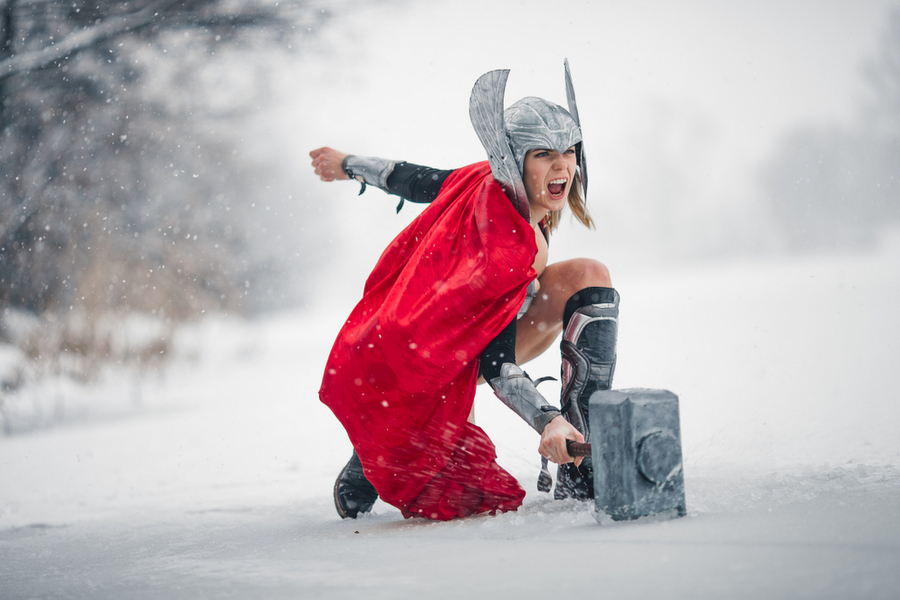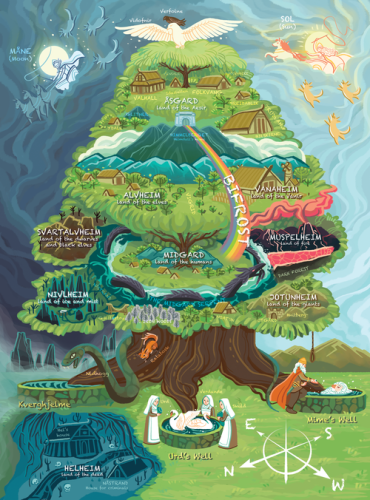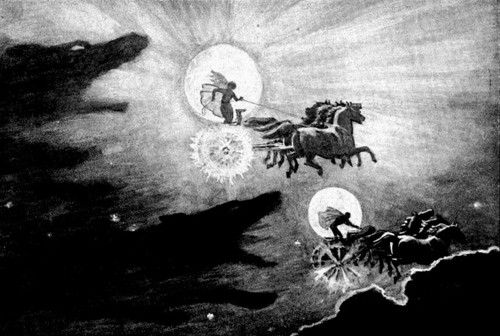The Vikings continued for 300 years, starting from 397 AD, almost dominating Europe, but also trading through the Byzantine Empire. “Viking” term has been used primarily by the British for people engaged in a maritime activity to conquer. For this reason, if someone decides to “go to Viking”, this person has reported his intention to join an influx to be made to very profitable targets in other lands. Every Viking is Scandinavian, but not every Scandinavian is Viking. In fact, while reading the religions, histories, and cultures of the Vikings, you are reading the history of 5 different nations and more than 10 countries, not the history of a country and nation that currently exists. A significant part of current Denmark, Sweden, Norway, the Faroe Islands, Iceland, and even the people of Scotland, a part of Russia, and the Normandy region are actually of Viking origin.
The religious beliefs of the Vikings are classified as “ethnic and society religion”. In Christianity, God is an absolute, omniscient figure, always present everywhere; and this is quite different from Scandinavian and other Pagan Gods who believe in several different Gods, each with different specialties. For the Vikings, while the universe is filled with Gods, spirits, and supernatural energies that make the world a challenging and adventurous place, according to Christians the universe is ruling by a single God, leading a world full of sins. When they met during their conquest this difference of their world views has also shaped the relationship of Vikings, with the Christians. It was deemed dishonorable to kill vulnerable civilians for a Scandinavian warrior but Vikings did exactly that between 793-1100 AD. This has an important role in the fact that the people whose beings have been plundered have different religious beliefs than the Vikings, and the rules that ensure the continuity of the Viking society, do not apply to them. The Vikings, who plundered the Lindisfarne Abbey on their first visit to Britain, killed every priest they encountered and confiscated all their valuable possessions. These incidents would have been a serious crime if the victims were Scandinavian, but the killed priests were considered the biggest obstacle to access to wealth, and the fact that these people were easily killed at their places of worship meant that their God did not have the power to protect its creatures.

According to the Scandinavian belief, the end of the world was obvious, but it could still be fought against. Scandinavian Gods breathed life into people, and it was entirely up to you to use it. The Gods came to Scandinavia with the German immigration at a time that coincided with the beginning of the Bronze Age (2300- 1200 BC). These were the Gods who understood that their time was limited and devoted to their lives. Their followers were encouraged to do the same.
The main sources of Scandinavian religious beliefs are Poetic Edda, based on the oral traditions of the 9th and 10th centuries AD, and Prose Edda (1220 AD), a fairy tale compilation based on ancient stories. (Edda can be sounds familiar to us. The Netflix series “Ragnarok” filmed in this village:)) According to the Scandinavian creation story, before the creation of the world, there is a giant called Ymir, who lives only with the gratitude of the big cow Audhumla and ice. Audhumla, while feeding Ymir with milk flowing continuously from its four breasts, provide its own nutritional needs by licking ice. His lick of ice would later lead to a son named Borr and save God Buri from the trap he had fallen on.
After Borr; marries with Bestla, daughter of ice giant Bolthorn, who will give birth to Vili and Vé and Odin. These Gods unite and kill Ymir and use his body to create the world. The first humans were Ask and Embla had cause and passion by other Gods. devoid of a soul and a body until life was blown into them by Odin.
Consisting of nine platforms of existence created by the Gods, the world is adopted as an enormous tree known as Yggdrasil. The most famous of them is Midgard, the home of the mortals, Asgard, the home of the Gods, Alfheim, the home of the elves, and Niflheim, another place where evil deaths go. Especially the heroic women who died during birth went to the Frigg Hall in Asgard, here they would spend their afterlife with Odin’s wife, and the men who died heroically in wars went to the Valhalla hall of Odin.

After defeating the ice giants, Odin and other Gods set up the entire universe according to their principles. Although ice giants lived in their homeland, Jotuheim, they posed a threat to Asgard and Midgard. At the twilight of the Gods, also known as Ragnarök, will be great destruction and it will be freed from chaos chains.
When Ragnarök happens, Skoll, who is a wolf, will swallow the sun and the moon will swallow by Skoll’s brother Hati, and the world will drag into darkness, while all the plains of Yggdrasil will devastate by the great wolf Fenrir. When that day comes, God Heimdall calls his Gods into battle by blowing on his pipe; Odin would invite all heroes of Valhalla to join the Gods for the defense of creation. Even though the Gods would fight bravely, eventually they would die in battle, and the entire universe would be destroyed in flames and buried in deep waters. Although this means the end of the world, but not the end of existence. After this world collapses, a new world will be created, rising from the waters, and this cycle will constantly repeat itself.
Scandinavian Gods were honored by the behavior of people who believed them. There is no evidence of religious hierarchy was found in Scandinavia before Christianity. The women touched by the Gods were called Volva, the Volva could hear prophecies and translate them to other mortals. Although there were some temples built for the Gods, most of the worship would take place in natural environments that are connected with a certain God. Stories about Gods, creation, and Ragnarök, which have been spoken verbally for a long time, were finally written by the historian/poet Snorri Sturluson in Iceland. (AD 1179-1241)
